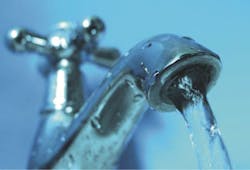Effective Testing for Lead in Drinking Water
Public health crises highlight the need for effective measurement
Most people are familiar with the lead-tainted water crisis in Flint, Mich. Briefly, the city switched from treated water supplied by the Detroit water system to water from the Flint River treated with chlorine. But the city neglected to add corrosion inhibitors to the water and the chlorine caused corrosion in the lead service lines, which caused extensive leaching of lead into the water supply. Flint had a significant number of lead supply lines, and inadequate testing further contributed to the extent of the city’s problems.
Lead is the number one environmental heavy metal health threat to people in the U.S.
Portland, Ore., on the other hand, has no lead supply lines but it does have a corrosive groundwater source and it omits corrosion inhibitors. Some households have lead levels in their water 10 times higher than 15 ppb, the maximum contaminant level (MCL) set forth by the U.S. Environmental Protection Agency. In fact, 11 states plus the District of Columbia have a high prevalence of corrosive groundwater in wells and 8 million people rely on well water in those areas, yet there is no testing requirement.
Options for testing include: rapid test strips using immunoassay detection, photometric measurement, or sending samples to a testing lab. Test strips only indicate whether the lead level is above EPA’s MCL. If test results are positive, then additional testing is required. Photometric testing is rapid and accurate and gives meaningful data in terms of actual levels. Reference labs are also accurate but results can take time to be obtained. While the EPA MCL for action is 15 ppb, the EPA goal is actually zero since there is no safe level of lead in drinking water. WW
Industrial Test Systems is exhibiting at AWWA’s ACE.18 in booth 17100. Learn more at sensafe.com.
Circle No. 287 on Reader Service Card

